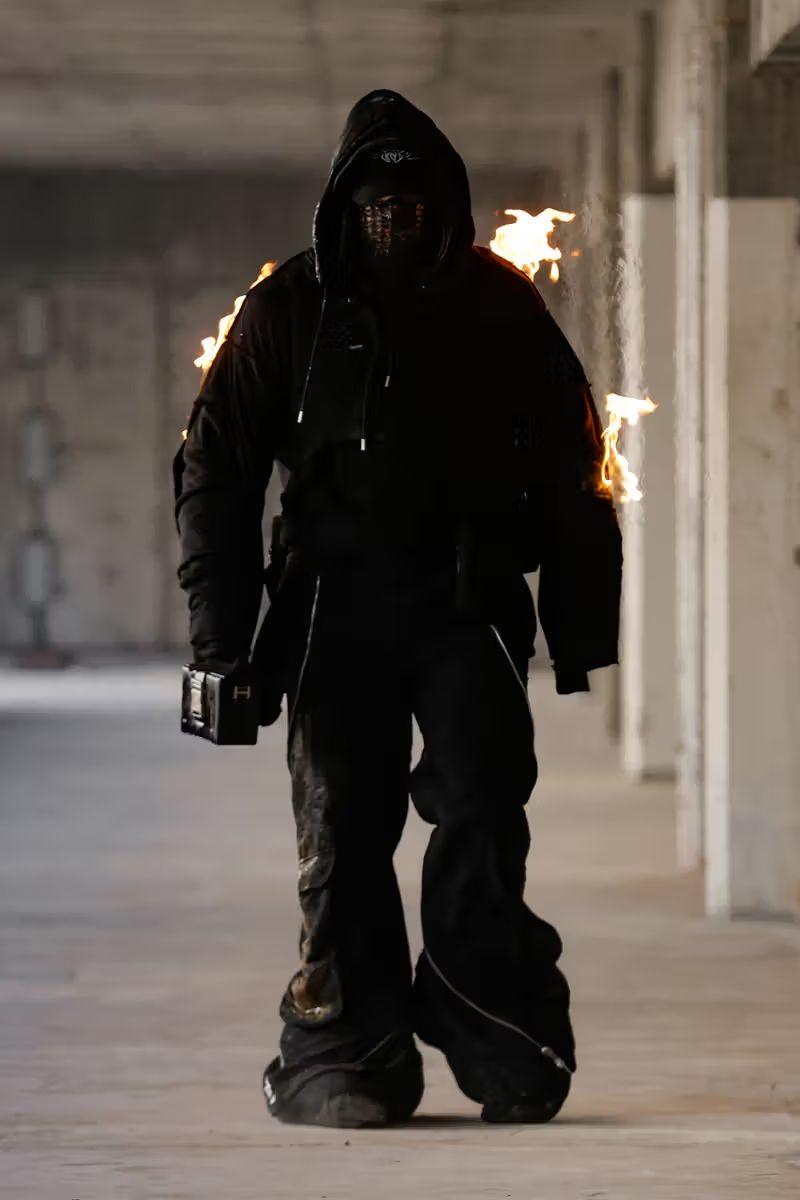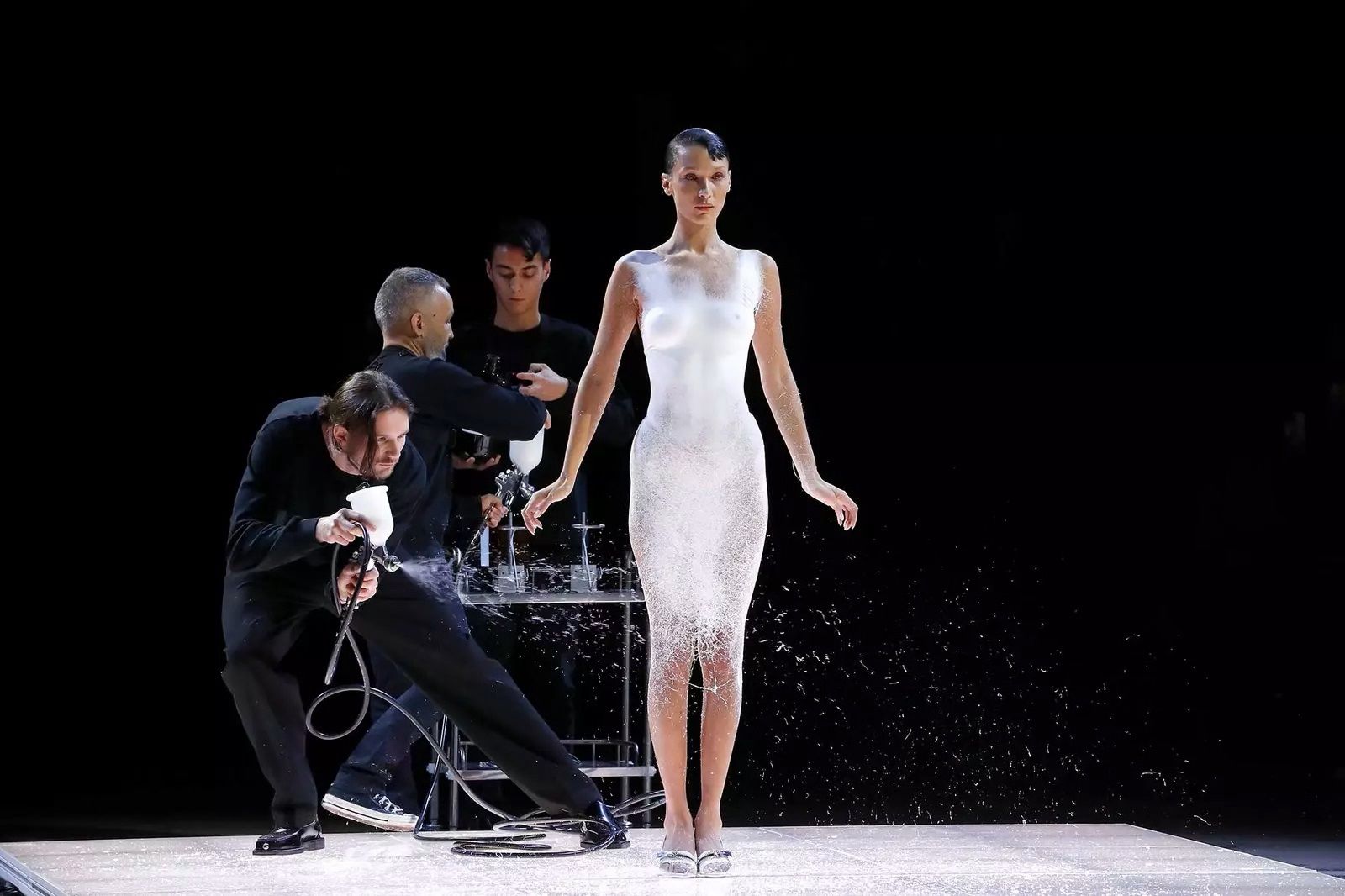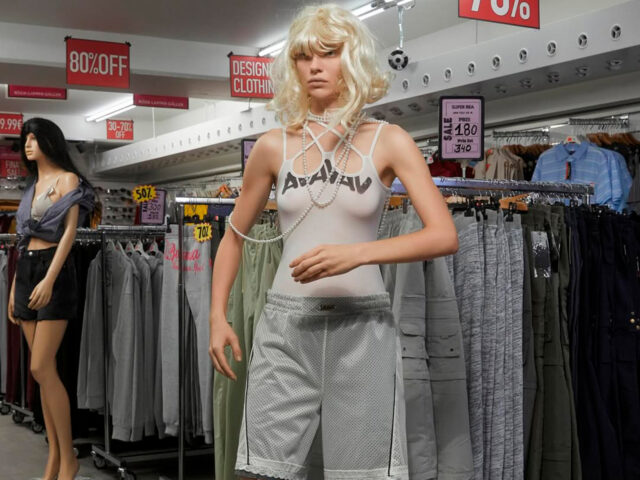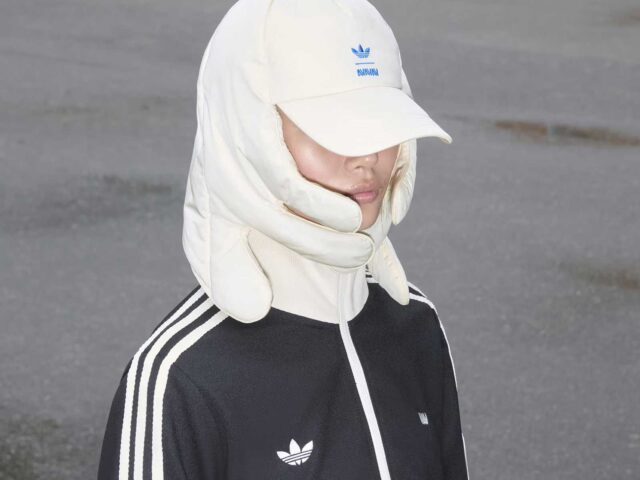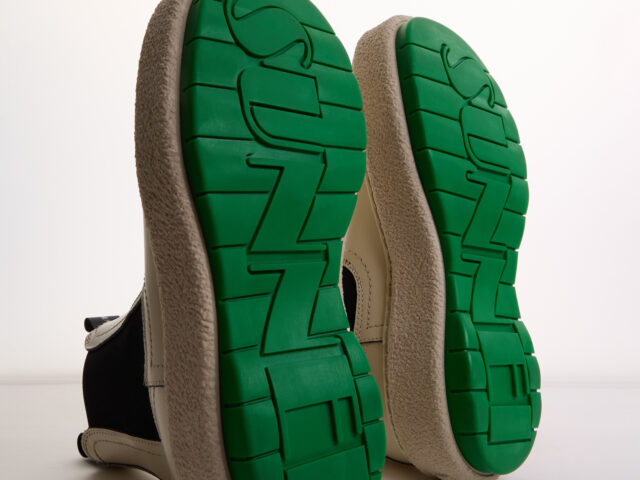When the viralization of the show, or of that eternal search for inordinate influence to capture the collective gaze, becomes the truly substantial thing in the Fashion Weeks, beyond the material, the clothes or the collections devised.
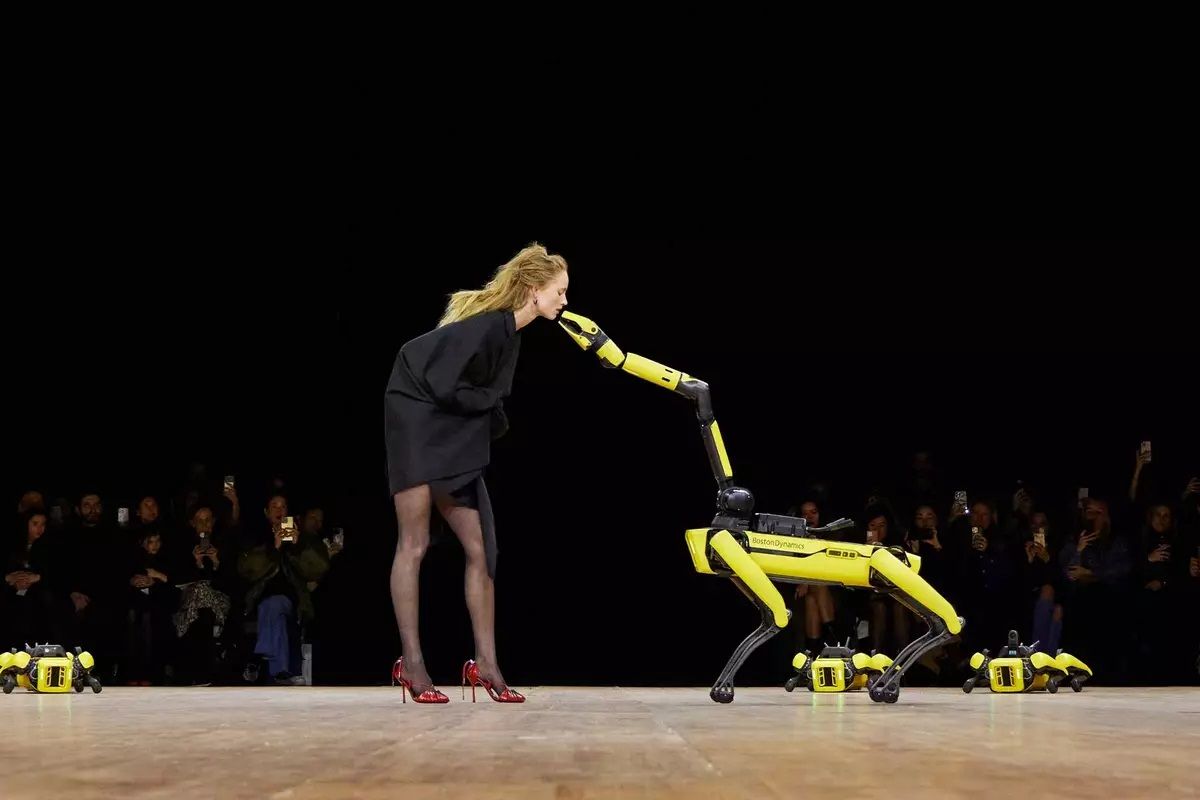
In times of aesthetic and visual overstimulation, capturing the viewer’s attention becomes an arduous and laborious task that must be supported by a disruptive concept or a divergent story that transcends the plane of material reality to connect with the emotional. In an idea that provokes reactions that defuse the general desensitization to which we are subjected, as Coperni demonstrated with her sculptural spray-painted dress for her SS23 runway show.
The latest edition of the Fashion Weeks have then glimpsed that whole scenario or paradigm crossed by a constant: the virality of the show. From Heliot Emil‘s model wrapped in flames, to Collina Strada‘s sinister chimeras, Coperni‘s interactive robot dogs or Sunnei‘s crowdsurfing concept: creativity, transformation and experimentation now collide to become the maxims of Fashion Week.
FASHION AS SPECTACLE
All these brands, most of them installed in the emerging phase of fashion, need to provide and expose such turns or subversive concepts on the catwalk stage. And, although they continue to design complete collections, now the collective vision and judgment is transformed: people no longer talk about the garments themselves, but about the expectation generated at the show.
That aura of notoriety that designers or creative directors pursue, or post-show veneration, seems to have become the ephemeral trend of the moment, encompassing all the others. A latent current that has been masterfully followed by Beate Karlsson’s AVAVAV brand.
AVAVAV’s FW2023 collection channeled another of his inventive and iconoclastic ideas on the runway with models dramatically strolling or stumbling down the runway as their clothes fell off, and in real time shed their bodies. Shirts ripped, heels broke or earrings fell to the floor, underlyingly evoking concepts such as the deconstruction of luxury and/or the superficiality of fashion.
THE APPROACH OF ESTABLISHED BRANDS
Within this new approach, this exploration of virality seems to be reversed by the most established brands in the system, which are adopting the opposite stance. Firms such as Gucci, Balmain, Prada or Balenciaga are now focusing on the construction of the garments, on craftsmanship and materiality. For they already have that public notoriety or reputation, without the apparent need to build those presentations of great effort, or to immerse themselves in that current of the viral.
From all this stems the debate as to whether it really makes sense to organize parades of vast sums of money just for the sake of exhibiting a collection, when there are other much more affordable ways such as lookbooks or other forms of virtual presentation. In the end, live fashion is a spectacle, a kind of high art product, which should be enhanced by a story or a message that connects with the audience, and transcends on an emotional level.
Sigue toda la información de HIGHXTAR desde Facebook, Twitter o Instagram
You may also like...
